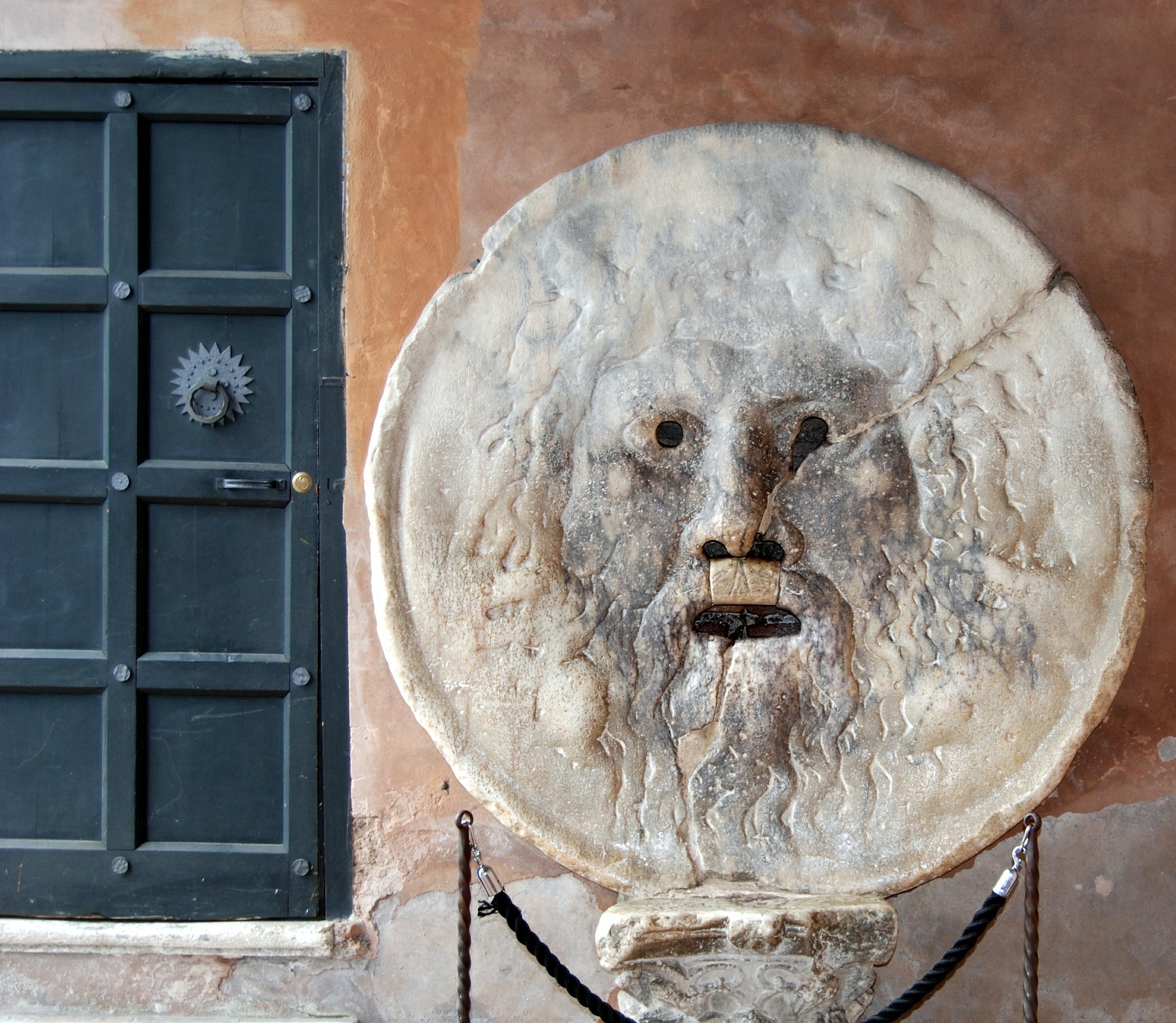Audrey Hepburn and Gregory Peck in front of the Mouth of Truth, in a scene from the film Roman Holiday. Perhaps this is the memorable image that made the great stone face located in the world famous in the portico of the Basilica of Santa Maria in Cosmedin, in the Foro Boario in Rome. The mask is famous but also its fame, as old as it is disturbing, according to which whoever lied keeping his hand inside his mouth would have lost it because the mouth itself would have cut it with a bite.

The film reports tell us that Hepburn, during the filming, was really scared, perhaps due to a joke from her partner, which made the scene even more realistic. The fact is that the legend, because of course it is a legend, exists and has very distant roots.
The mysterious faun that was perhaps just a manhole cover
The large marble mask "pavonazzetto" (so called from the typical purple veins, similar to those of the peacock's tail), a must for tourists visiting Rome, has large dimensions. Its diameter is almost one meter and 80 centimeters, its weight exceeds 1300 kilograms. It is walled up, since 1632, in a wall of the church under the portico, previously it was fixed in an outermost wall. It represents a bearded male face, probably it is the image of a faun, of an oracle, perhaps also of the ocean god whether the hypothesis is true that, before being placed here, the mask was the lid of a simple manhole. So it used to be in the days ofAncient Rome, and at the time the big mouth (but also the eyes and the nose that are pierced) served to "capture" not the hands of liars but simply, and usefully, rainwater.

In the year XNUMX a guide for pilgrims spoke of this curiosity for the first time
There is a second hypothesis about its origins, and in this case, archaeologists see a connection with the mysterious legend that has accompanied the Mouth of Truth for centuries. In fact, the mask may have been the lid of a sacred well. In ancient times the well was located in front of the temple of Mercury and it is here that Roman traders used to swear their honesty when buying and selling goods. Of the mysteries related to this mask, even if we do not yet speak properly of a bite of the hand, there are traces already in a document from the year XNUMX. It is a guide for pilgrims, Mirabilia urbis dominae, which already at the time speaks of the Mouth of Truth. We read, in this ancient guide, that the Mouth would have had the power to pronounce oracles.
A Roman sonnet by the poet Gioachino Belli dedicated to the Bocca della Verità
A century later a German text reports a myth linked to the emperor Julian whose hand was held for a long time by the Mouth of Truth and released only in exchange for the restoration of pagan divinities. Julian the Apostate was in fact the emperor believed to be the restorer of paganism. In Middle Ages the mask becomes a "judge" of marital fidelity, "Supreme court" for wives or husbands who had reason to doubt the fidelity of the spouse. A belief that many Italian and German travelers will tell about later in the centuries. The Bocca della Verità begins to become a curiosity, a legend that is talked about in Rome and not only in Rome. Its history and myth are consolidated, becoming the subject of folk tales written and reported over the centuries. The Roman poet Giuseppe Gioachino Belli also dedicated a sonnet to her in the nineteenth century. Up to our days.

When does the name Mouth of Truth date back? We have to go back in time once again. The first traces of it are found towards the end of the fifteenth century. And since then they will chase each other in centuries written but also iconographic testimonies: drawings, images, vintage prints. Sculpture is talked about, then as now, among the things to see in Rome. To visit absolutely, if not for the artistic interest certainly to satisfy a pinch of curiosity and to experience the "thrill" of putting your hand inside this "mysterious" mouth.





